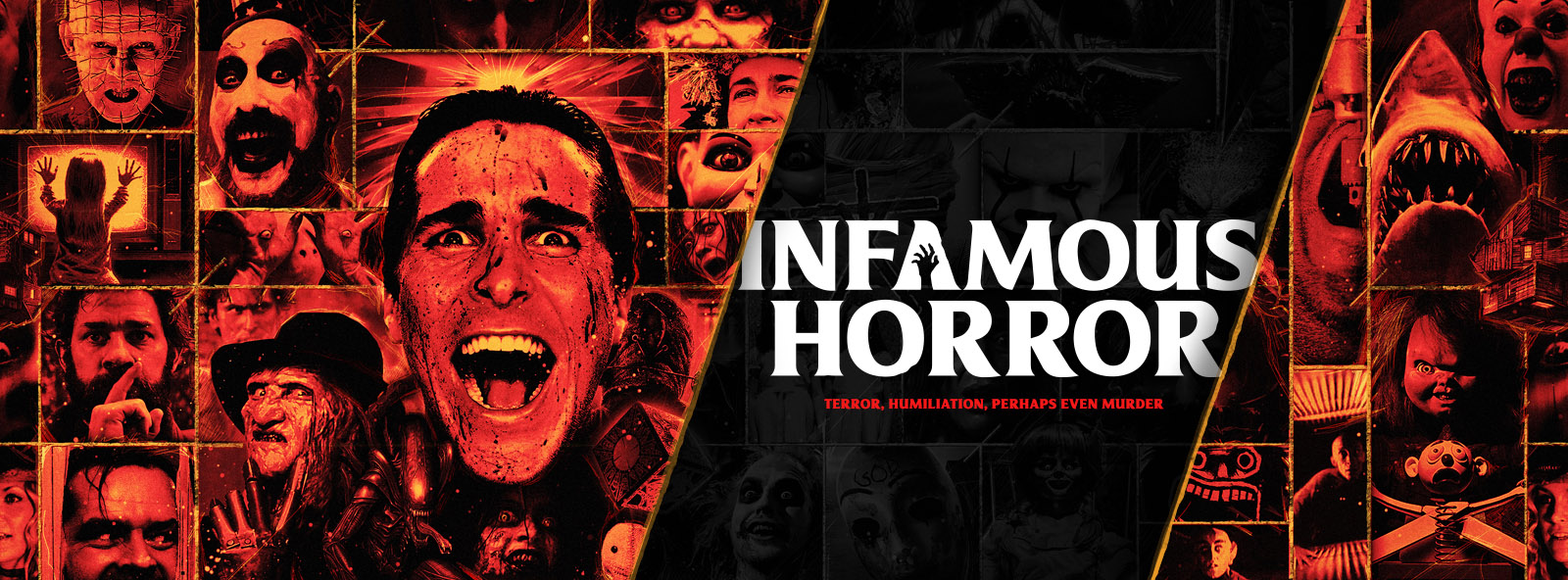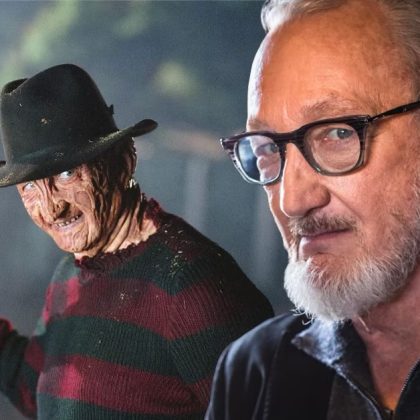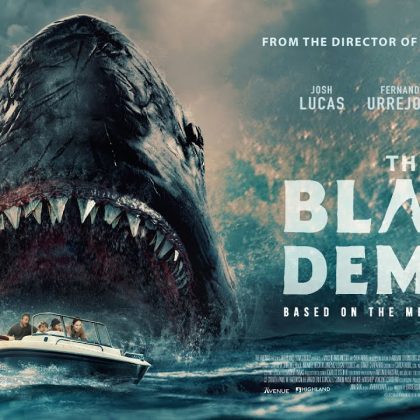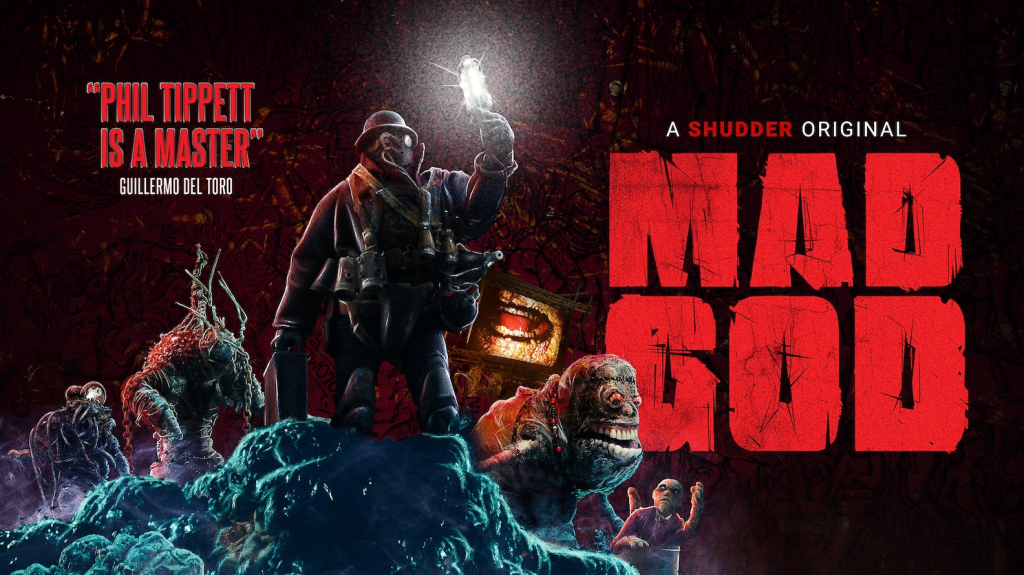
The visual effects mastermind behind key creatures/scenes in STAR WARS (Episodes IV-V) and JURASSIC PARK, Phil Tippett put a personal horror-fueled passion project on hold for nearly twenty years. He felt that handmade visual effects like stop-motion were becoming obsolete. However, in the past decade-plus there’s been a stop-motion resurgence and a growing appreciation for hands-on practical effects. (I personally love anything involving puppetry.) ‘
I was excited to watch Tippett’s MAD GOD because I haven’t seen many animated adult features. THE NIGHTMARE BEFORE CHRISTMAS, CORALINE, and PARANORMAN, all family-friendly, were among the few titles under my belt. I did recently watch THE SPINE OF NIGHT, an epic R-rated horror fantasy that features rotoscope animation, but outside of that I haven’t seen much in terms of horror-gore animation. While MAD GOD delivers in the gore department, it dives much deeper – it’s a thought-provoking descent into a mad world not so different from our own.
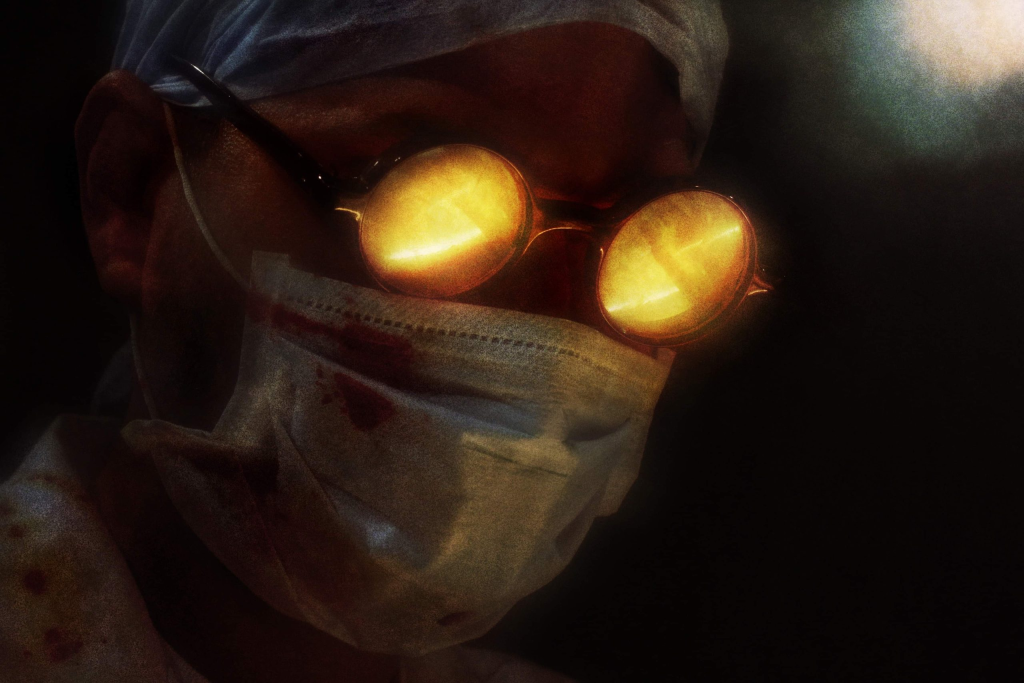
The Descent
MAD GOD starts with the film’s lead, The Assassin, dispatched in a pod from a high-security facility. The Assassin is lowered into an unfamiliar, mysterious biome (think of Natalie Portman set loose in the danger zone in ANNIHILATION). The imagery here is trippy and psychedelic. The rolling backdrop looks sort of like a gorgeous purple fossil, maybe carvings from a forgotten civilization. The backdrop changes to dug-up bones of creatures likely extinct, then morphs into vegetation, statues, and other symbols of time long-passed.
The pod lands with a thud (the sound effects in this movie are awesome – props to that department) and we get a full look at The Assassin. My first impression was that he kind of looks like the Miner from MY BLOODY VALENTINE – maybe it’s the all-black leather suit and protective mask/nosepiece. There isn’t much else to go on with his character – he’s silent except for the squeak of his boots, and the only hint to his purpose lies in a map he frequently pulls from his coat. He’s looking for something, but we’re not entirely sure what that something is. Apparently, it’s worth descending into hell for.
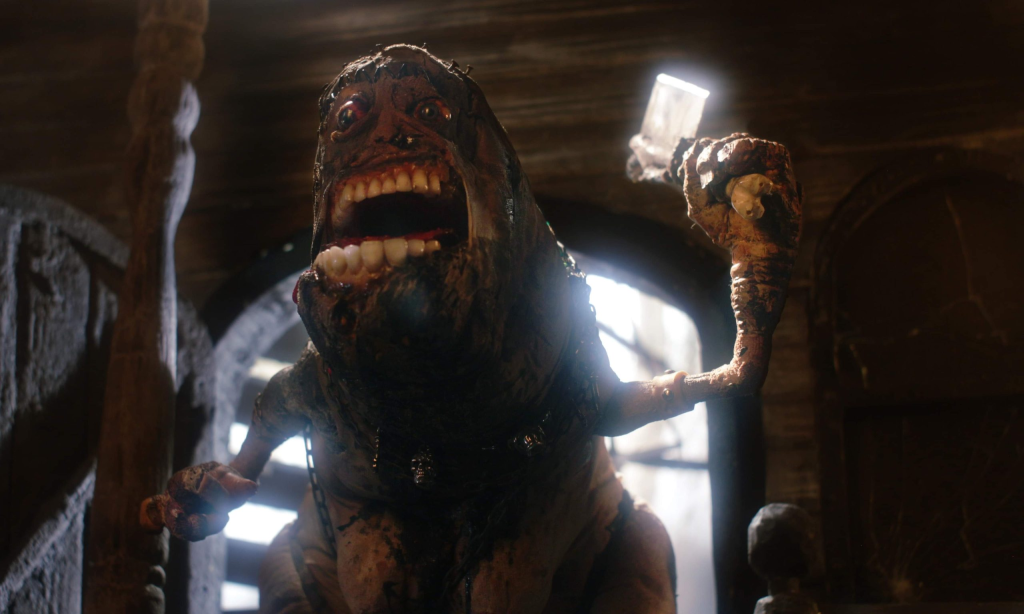
A Mad World
The post-apocalyptic landscapes and monsters, all painstakingly detailed by hand, are incredible – I can’t imagine how long it took to bring these small-scale models to life. There’s an emphasis that this nefarious, industrial world used to be a beautiful place. That’s evident from relics and statues left behind – but now there’s rivers of green radioactive waste and countless barbed-wire fences, perhaps evidence of a past uprising.
My impression that this was an un-inhabitable, humanless wasteland was quickly proven wrong. The Assassin finds a cluster of buildings and through his binoculars, he witnesses violence, chaos, and murder within. A gargantuan blob-like beast with a likeness to the Slimer from GHOSTBUSTERS polices the area.
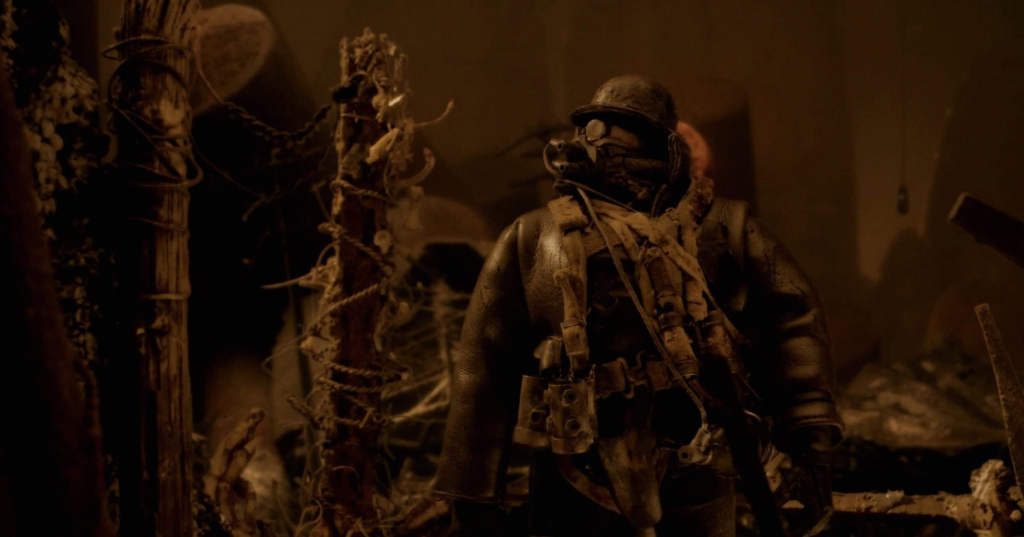
Beyond that, there’s a huge system that runs through this nightmare land. It’s like a giant factory – things are constantly in production. There’s an infernal machine birthing humanoid figures, and these figures are working hard for the monsters to create something. At the same time, these figures are killed, incinerated, and disposed of by the very machines and monsters they work for. (A possible commentary on our labor system, perhaps?) Some of the figures even voluntarily walk into pits of fire. While this is happening, The Assassin continues his stroll as a spectator, almost like Dante walking through the circles of Hell. I definitely got an Inferno vibe watching this – we’re lowered into various sections of a hellscape, and in each section a different flavor of awful is occurring.
I think the main goal of this factory system is to feed the monsters. When I think of the phrase “feed the monster,” I wonder if maybe the film’s trying to show that, while what’s happening isn’t for the good of mankind and isn’t bettering anyone, the humans (or what’s left of them – humanoid husks) continue to “feed the monster” and “feed the never-ending machine” without question, sacrificing themselves in the hive to get it done. Regarding themes and overarching messages, Tippett states, “MAD GOD kind of defies description. I look at it like creating a narrative that the audience members themselves will complete.” I’ll be curious to see how others interpret this film, but from the start I think it’s a possible commentary on how the current world and certain systems in place aren’t working.

The Dilemma Deepens
The Assassin is eventually held hostage for the amusement of a theater full of happy, laughing people. These people aren’t laboring husks though; they seem very well-off. We’re also introduced to a twisted surgeon. So maybe the monsters, the wealthy humans, and even big pharma have a sort of pact to exploit the rest of the humans? It made me recall REPO: THE GENETIC OPERA in that the everyday person is being exploited and hunted by the elite.
The plot thickens when The Assassin’s memories are excavated, and we’re introduced to a red-and-black-robed man with elaborately lengthy fingernails. He seems like some sort of priest or cardinal figure, and he’s the one dispatching Assassins into the monster-world because he wants them to find something. So, the Assassins themselves are sort of puppets as well, no different than the disposable human husks laboring for the beasts.
Death and the Hermit
The plot gradually becomes even more abstract and trippy – we get memories, glimpses of war, and introductions to possible villains. I kind of like that not everything is spelled out – Tippett wants this to be a sort of puzzle that the viewer assembles on their own. We aren’t given much dialogue to guess anyone’s intentions, but none of them seem good.
Among the many voiceless antagonists is an ethereal, floating spirit-creature (I think it’s wearing a plague mask). I initially thought “Mad God” was a reference to The Assassin, but it could very well be this creepy Death-like entity. To be honest, it’s sometimes difficult to determine who the true Mad God is here – everyone’s a bit mad and wild-eyed. We’re also introduced to a disfigured hermit, a Jim Henson-like puppet gone rogue. The hermit is unafraid of the monsters. The hermit’s a coveter of clocks, books, scriptures, and other symbols of time. The Death-god and the hermit are ultimately shepherding us to the final act.
Dust to Dust
I think the ending (and the film as a whole) is a reminder that the passing of time is inevitable. And even though humans know time is borrowed, we still use that time creating drama, war, and chaos. What is all of that human suffering for though? (Nothing.) I don’t view the ending as ultra-nihilistic (though it certainly seems that way!), but more of a “look at this” stroll through how things currently are – not working for many. While the plot is loose and we have to do much of the guessing, I do think the message is something like, “We are dust and unto dust we shall return.”
MAD GOD is a high-speed carousel of collective atrocities. It’s an endless machine of madness, and The Assassin is really just one of countless cogs within. One thing you’ll notice – pieces of The Assassin’s map keep falling off. And it seems he’s aware of this, but he doesn’t seem to make a fuss about it. Maybe the map falling apart is also symbolic of borrowed time?
The ending shot sums up the movie nicely. I won’t spoil it, but the message seems to be, “This is crazy, all of this is crazy.” MAD GOD shows us glimpses and disturbing, dreamlike fragments of things we all fear. But on the other hand, Tippett states that MAD GOD’s “traditional narrative structures are mere suggestions,” so maybe I’m overthinking my movie-watching experience. Maybe MAD GOD is just a plot-less, abstract look at all the things that drive people to destroy. Curiosity, greed, money, power, selfishness, boredom/amusement, hunger for knowledge, etc. – they’re all here and they’re making us mad.
MAD GOD premieres on SHUDDER Thursday, June 16th, 2022.
Rating: 5/5 stars
Bret Laurie is an editor, writer, and longtime horror fan in Massachusetts. He contributes film reviews regularly and supports independent horror films through social media. His flash-fiction tale “The Shell” is featured in the DarkLit Press anthology “Beach Bodies.”


